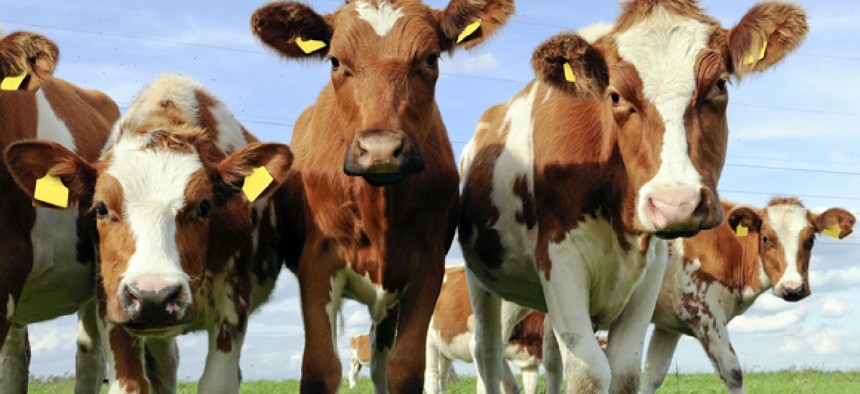The Land of the Free: How Virtual Fences Will Transform Rural America

Gerard Koudenburg/Shutterstock.com
A USDA scientist has created a startling innovation with GPS-equipped free-range cows.
When European farmers arrived in North America, they claimed it with fences. Fences were the physical manifestation of a belief in private ownership and the proper use of land -- enclosed, utilized, defended -- that continues to shape the American way of life, its economic aspirations, and even its form of government.
Today, fences are the framework through the national landscape is seen, understood, and managed, forming a vast, distributed, and often unquestioned network of wire that somehow defines the "land of the free" while also restricting movement within it.
In the 1870s, the U.S. faced a fence crisis. As settlers ventured away from the coast and into the vast grasslands of the Great Plains, limited supplies of cheap wood meant that split-rail fencing cost more than the land it enclosed. The timely invention of barbed wire in 1874 allowed homesteaders to settle the prairie, transforming its grassland ecology as dramatically as the industrial quantities of corn and cattle being produced and harvested within its newly enclosed pastures redefined the American diet.
In Las Cruces, New Mexico, Venue met with Dean M. Anderson, a USDA scientist whose research into virtual fencing promises equally radical transformation -- this time by removing the mile upon mile of barbed wire stretched across the landscape. As seems to be the case in fencing, a relatively straightforward technological innovation -- GPS-equipped free-range cows that can be nudged back within virtual bounds by ear-mounted stimulus-delivery devices -- has implications that could profoundly reshape our relationships with domesticated animals, each other, and the landscape.
In fact, after our hour-long conversation, it became clear to Venue that Anderson, a soft-spoken federal research scientist who admits to taping a paper list of telephone numbers on the back of his decidedly unsmart phone, keeps exciting if unlikely company with the vanguard of the New Aesthetic, writer and artist James Bridle's term for an emerging way of perceiving (and, in this case, apportioning) digital information under the influence of the various media technologies -- satellite imagery, RFID tags, algorithmic glitches, and so on -- through which we now filter the world.
(Image via Gerard Koudenburg/Shutterstock.com)





